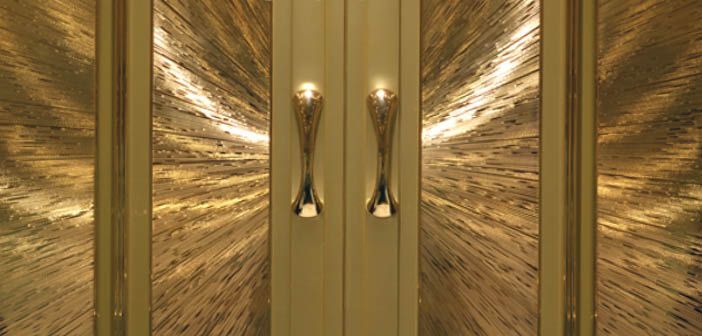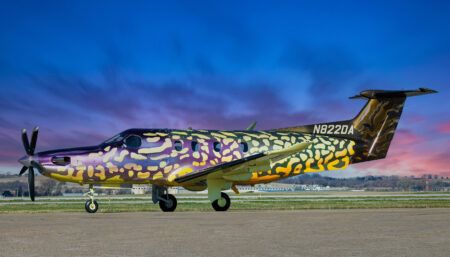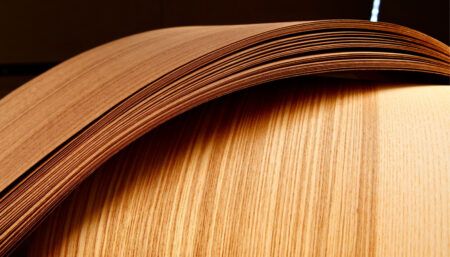Nick Gleis shares stories from over 30 years of photographing bizjets
How did you get your first big break?
In 1984 there was a DC-8 completed at Airesearch Aviation in Long Beach, California, USA. The owner of the aircraft was Adnan Khashoggi, who at the time was the richest man in the world. Khashoggi commissioned Michel Reese to design an aircraft so futuristic that even today – 30 years later – it remains one of the most unique aircraft ever built. I had been photographing aircraft for Airesearch, and had done a couple of projects for Reese. Airesearch and Reese then agreed to commission me as the sole photographer on the aircraft. Even then I knew it would be one of the greatest private aircraft ever built. The shoot took seven full nights and I completed 31 total photographs.
Reese then went on to become the Sultan of Brunei’s designer – and his designs, in my opinion, are some of the finest to ever grace the skies. I was indeed privileged to work with Reese on those aircraft and others until his retirement.
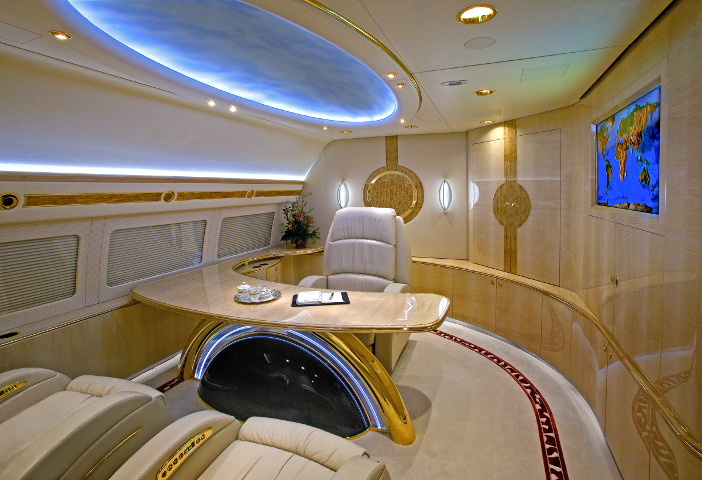 Who commissions you – the owner or the designer? And what are the photos used for?
Who commissions you – the owner or the designer? And what are the photos used for?
Most of my clients are completion centres and OEMs. Next would be designers, aircraft management firms and 135 operators. But my favourite clients of all are the designers because they truly care how their creations are photographed. They always want their design qualities to appear in the best light, they’re artists. Therefore I get the most cooperation and appreciation from them.
Most of the photographs I take are meant to showcase the work done by the completion centres. In the cases of royalty and heads of state, the photos are used for documentation and historical purposes.
Finally, 135 operators use the photographs to market their aircraft, whether the aircraft are for sale or lease. Most of the photos are shown to potential customers in a private place to ensure the privacy and security of the aircraft owner. About 90% of the photos I take are never reproduced in brochures, in the print media, or on the internet.
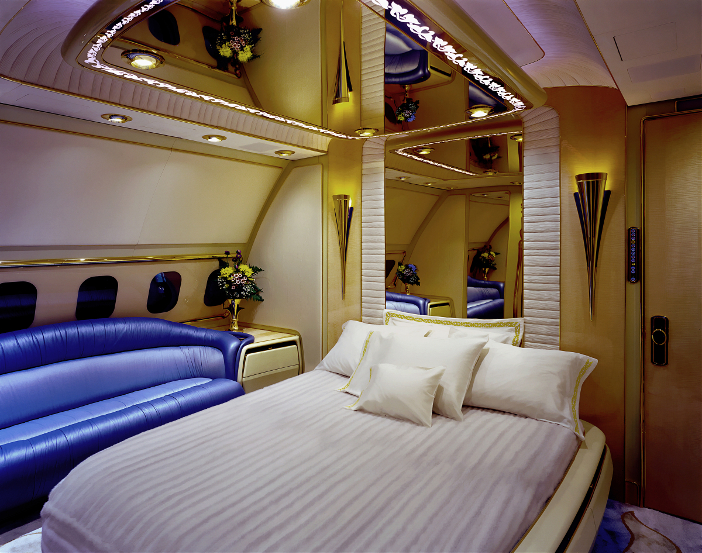 What is it that inspires you about bizjets?
What is it that inspires you about bizjets?
I have two favourite or inspirational moments when I photograph an aircraft. First is the walkthrough on the aircraft. At that point we finalise the shot list – and I love all the thinking and planning of that early stage.
Second, I like it when all the elements of the shot have finally come together – we’ve done the principle photography, I’ve finished all the post-production work and now I have the final image before me.
You see, a photograph isn’t just a record of what’s there – a photograph must portray the feeling of the aircraft, it must capture the essence of the aircraft. That’s always my goal.
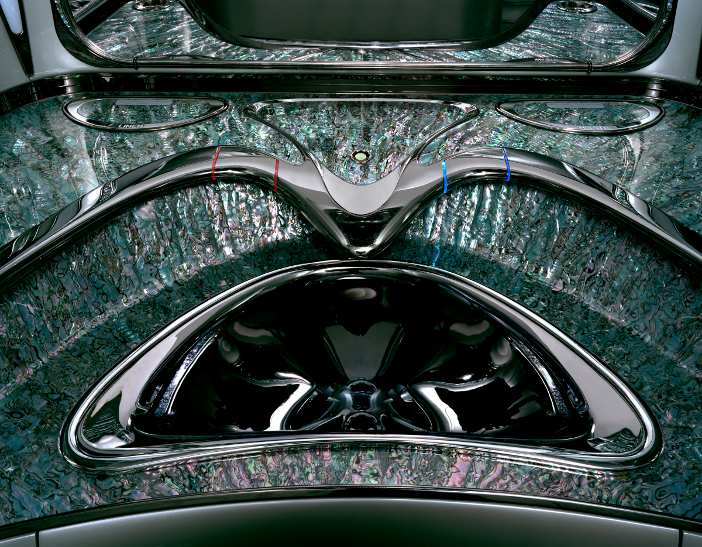 What are the challenges involved?
What are the challenges involved?
From a photographic standpoint, lighting is always the most challenging part. But needless to say, after three decades of photographing aircraft I have a rather large bag of tricks – and on some aircraft I definitely dig deep into that bag.
Equipment is also a challenge. It’s extremely important that my equipment doesn’t damage or dirty the aircraft in any way. We keep all of our cords, tripods, lights and cameras very stable and clean so as not to scratch or mar any expensive surfaces.
Timing is always a challenge. When is the aircraft available – and for how long? Also, clients need to understand that the photographs aren’t just snap shots, time is required. Then, too, the end of a completion is always hectic. The client is eager to get the aircraft. The completion centre is finishing up all the last-minute squawks. Key elements like window panels and ceiling panels may still be missing, and all that adds up to a definite lack of time.
Next, the aircraft’s location may be a problem. All of my assignments require me to travel to where the aircraft is located, and the client doesn’t want to spend unnecessary money keeping me and my crew waiting because of unforeseen delays. Also, since my work is worldwide, I need to be aware of, and plan for, all the various electrical adaptors necessary for the lights and camera batteries.
Prior to the digital age – before the year 2000 or so – the sheer bulk of my equipment was also a problem. I often had to carry 25-30 cases of equipment with me to a distant shoot. But in today’s world, where a great deal of the final image is created in post-production, I can usually get away with 3-4 cases of equipment. That makes the job a whole lot easier from a logistical standpoint.
Finally, I’m constantly asked to make a fairly small space look very comfortable and spacious. To accomplish that, a person needs highly specialised equipment and a lot of experience – it’s complicated.
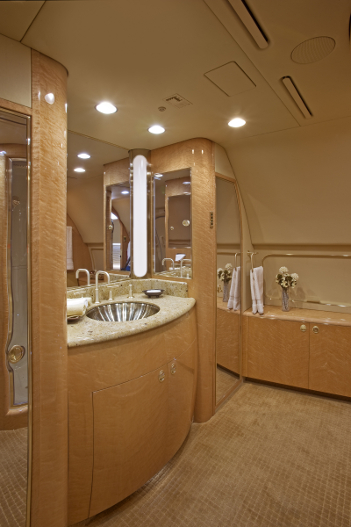 How long do you get to take the photos typically?
How long do you get to take the photos typically?
An interior photograph takes me anywhere from 30 minutes to an hour. A lot depends on the styling, the colour of the aircraft and the difficulty of the shot. What slows a shoot down is when the aircraft isn’t ready to be photographed. In other words, it needs to be cleaned, or all the protective tape and temporary material (such as seat covers) needs to be removed. Amenities such as china and crystal may not be unpacked or in the right place – and electronics, such as lights and switches, may not be functioning. Plus it’s extremely hard to photograph high-gloss finishes on woodwork and mirrored surfaces. So that also increases the difficulty – and the time necessary – to take a shot.
I am typically asked to get one cockpit shot, one exterior, and eight to ten interior photographs. That type of assignment takes me about six to eight hours.
Is it daunting meeting the aircraft owners?
With the corporate operators, as with any group of people, you meet the good, the bad and the ugly. They might be the nicest people you’ve ever met – or they might think you’re nothing but a vendor taking up their time.
Heads of state are all politicians in one way or another. I’ve never come across one who was rude or impolite, they’re always on display and are well aware of that fact. They’re also very busy people and rarely chit chat.
As for royalty, in the USA we are brought up to believe that all men are created equal. Not so. Royal family members are taught from the very first moment they’re born that they’re special. They can be quite spoiled and pampered. It’s not a bad gig if you can get it. Also, when working with royalty, the customs of their country need to be well known and observed. For example, if a royal family member wants to speak with you or requires your attention, he’ll let you know. With royalty you must always be very polite, respectful and reverent. It’s their world, you just live in it.
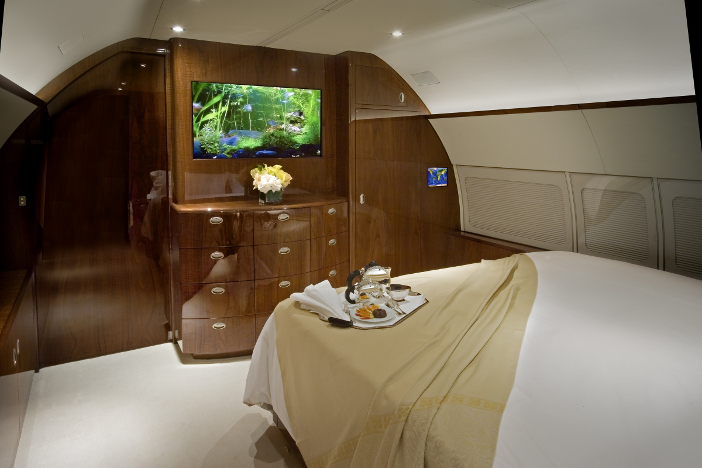 Have you noticed any changes in interior trends over the years?
Have you noticed any changes in interior trends over the years?
I’ve been photographing aircraft for about 30 years, and there have been big changes. In the 1970s and 1980s the aircraft interiors were truly one of a kind. Each aircraft was allowed a unique floor plan, and that included pretty much anything else the customers wanted that could be put on an aircraft.
That’s still true today with the larger aircraft, but for the average corporate-sized aircraft the OEMs now give the customers a limited number of floor plans to select from. Then the customers choose the wood and upholstery finishes. Also, as far as aesthetics are concerned, today the interiors are mostly very conservative. Most aircraft look more like cars inside than custom private jets. Advances in materials and technology have also given the aircraft owners of today a much wider range of choices in everything from entertainment systems to sleeping accommodations.
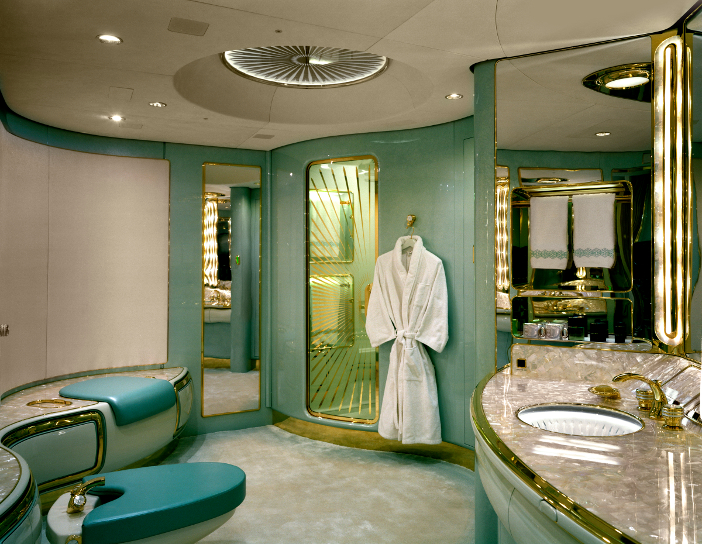
What has been your favourite project so far?
I have several favourite projects. My top three would be, first, Khashoggi’s DC-8, which I’ve already mentioned. My second would be my first Boeing 747-400. Again, this was a Reese design. It was a spectacularly unique aircraft because of the design elements. It was also one of the most challenging aircraft I’ve ever done. One reason was because I was still using film at the time and so didn’t have all the advantages that digital photography affords. Each picture had to be a work of art in itself – on one piece of film, one photograph – because there was no retouching. But my favourite project of all is my next photograph.
What’s coming up for you this year?
Gore Design Completions is delivering five really exciting aircraft this year. What makes that company so unique is it’s able to combine really terrific design with a completion centre that makes the vision a reality. Also, two other designers I greatly respect and admire have some larger aircraft completions due this year. But, aside from aircraft, a Middle Eastern client whom I’ve worked with quite a bit has asked me to photograph his new yacht this year. That should be very interesting.
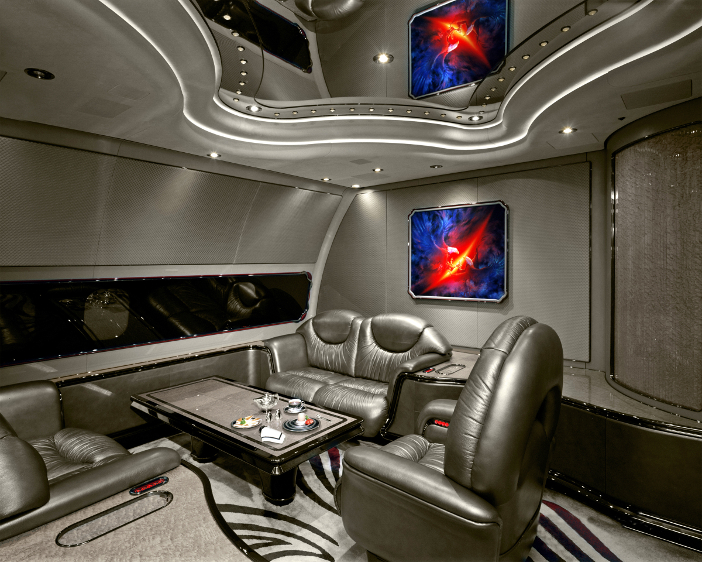 If you had a bizjet, what would it be like?
If you had a bizjet, what would it be like?
As with any completion, one of the key elements is the programme manager, who represents the owners’ interests and sees the project goes smoothly. For my money and my aircraft I would want International Aero overseeing all the phases of the completion.
In the small cabin category, for the design I would give Cindy Halsey, who is the head designer for Cessna, a call. Then I’d simply ask her which interior I wanted – she’s that good.
In the mid-to-large cabin category I wouldn’t purchase an aircraft at all. There are many fractional jet companies like NetJets that provide good aircraft at a reasonable rate – or I’d lease one from a company like Avjet, which has one of the largest Gulfsteam fleets in the world. Leasing an aircraft allows a person greater flexibility because of the large selection of equipment.
The third category is the single-aisle aircraft (I wouldn’t have any use for a double-aisle aircraft, so that wouldn’t even be a consideration). I would be a bit more fussy with that one. My first consideration would be the tail number: November One Charlie Kilo, of course. I’d also want seating capacity for about 15 people, plus several crew members. I’d rarely have that many guests onboard, but would like the option to do so.
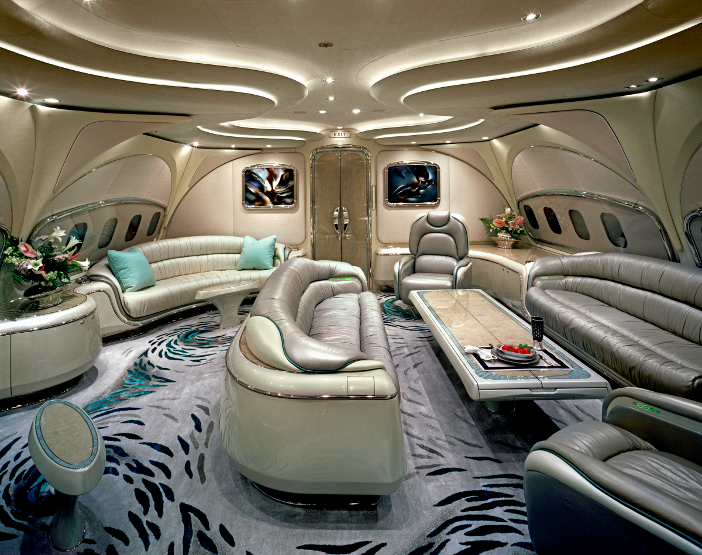
Also, buying an aircraft of that sort means I’d be flying overseas a great deal on longer distance flights, so I’d want several more important features. First, I’d want a comfortable stateroom with a large bed and private desk – plus a lav with a shower, dressing area and closet. Then I’d want a smaller stateroom with sleeping capabilities for two to four guests, and an adjacent lav without a shower. I’d also like a large lounge area with a conference table capable of seating six people. The conference area, as well as the divans and chairs, would all have dining capabilities. Of course, the table and chairs would have plugs for laptop computers and the aircraft would be WiFi-equipped.
Next, all the chairs would have individual stow-away video screens with the latest airshow and other entertainment choices. There would also be large-screen TVs in the lounge area and both bedrooms. The sound and entertainment systems would be custom-built by DT Systems – no question about that. I’d want the best. I’d also have uncomplicated remote controls that worked all the systems from each control. The system would include DirectTV, DVDs, music, the ability to download songs and movies from the internet, and any other features DT Systems felt should be integrated.
The aircraft would also have a crew rest area, a forward lav and a large galley capable of preparing meals for all the guests.
To me, simple in-cabin electronics and controls are also very important because the newest technology isn’t always the best – in fact it’s often more apt to fail or to need extensive maintenance. The newest electronics may be cool and great looking, but I’d want my systems to be reliable above all.
As far as the interior design goes, I’d want a nice, relaxed feeling – more like a well-furnished home. It would be nothing flashy – but I’d certainly want the interior to be worthy of a lengthy feature in Business Jet Interior International.
Finally, the lighting system would have to be a mutual effort and undertaking between the designer and myself. The lighting of the aircraft would be very, very important to me. After all, lighting is everything.
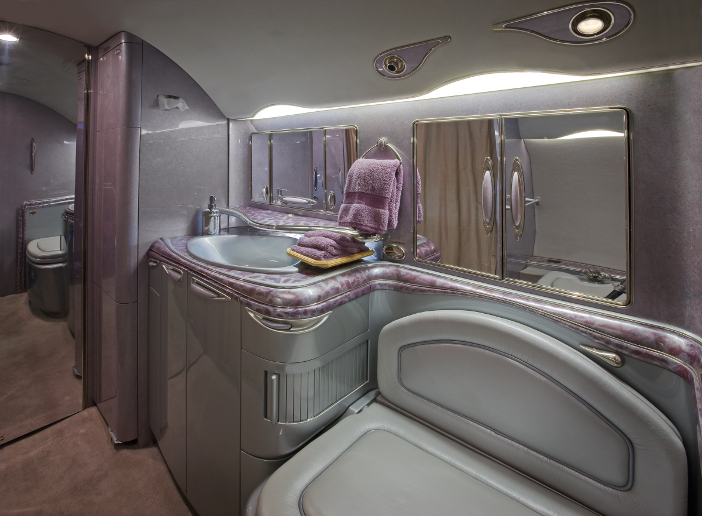 Nick Gleis has photographed more than 800 private aircraft – ranging from the Lear 20 series to Boeing 747-400s. He has also engaged in many air-to-air missions – capturing the images of flying aircraft by using such chase aircraft as a B-25 Bomber, a Lear 35 with special optics and Gulfstream IIIs and IVs. Gleis was trained by such notable photographers as Ansel Adams, Al Weber and Jerry Uelsman. He is a five-time winner of The Aurora Award for professional photography. For more information on his work, visit www.bizjetphotos.com.
Nick Gleis has photographed more than 800 private aircraft – ranging from the Lear 20 series to Boeing 747-400s. He has also engaged in many air-to-air missions – capturing the images of flying aircraft by using such chase aircraft as a B-25 Bomber, a Lear 35 with special optics and Gulfstream IIIs and IVs. Gleis was trained by such notable photographers as Ansel Adams, Al Weber and Jerry Uelsman. He is a five-time winner of The Aurora Award for professional photography. For more information on his work, visit www.bizjetphotos.com.


